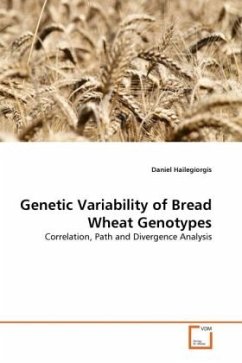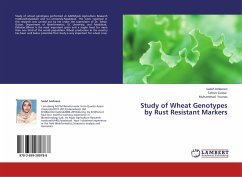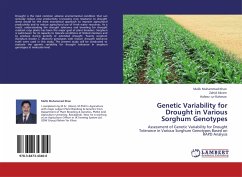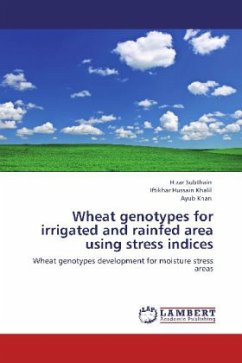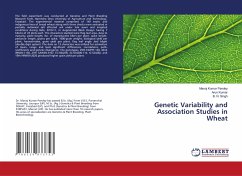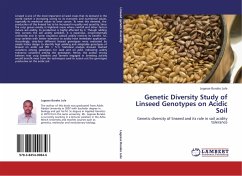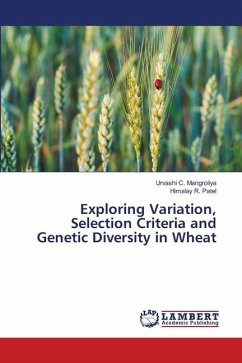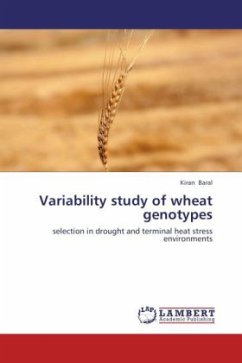
Variability study of wheat genotypes
selection in drought and terminal heat stress environments
Versandkostenfrei!
Versandfertig in 6-10 Tagen
32,99 €
inkl. MwSt.

PAYBACK Punkte
16 °P sammeln!
Nepal is under the effect of climate change and faces drought and heat stress in wheat growing season. Adoption of improved varieties has replaced the indigenous wheat germplasms which has narrowed the genetic base. This has resulted in genetically vulnerable situation. Due to this there is a chance of epidemic outbreak in biotic and abiotic stresses which will cause a significant loss in wheat production. For this new and diverse genes should be identified and combined. Forty genotypes were tested under irrigated, drought and heat stress conditions with Fourteen physio-morphological traits us...
Nepal is under the effect of climate change and faces drought and heat stress in wheat growing season. Adoption of improved varieties has replaced the indigenous wheat germplasms which has narrowed the genetic base. This has resulted in genetically vulnerable situation. Due to this there is a chance of epidemic outbreak in biotic and abiotic stresses which will cause a significant loss in wheat production. For this new and diverse genes should be identified and combined. Forty genotypes were tested under irrigated, drought and heat stress conditions with Fourteen physio-morphological traits used for the study. Highly Significant variation among the genotypes was found for the traits under study. Paired t-test was conducted to determine statistical differences among stress and non-stressed environments. Phenological period was reduced under drought and heat stress conditions. SPAD, Canopy temperature and relative water content made selection under stress effective. Variablity study and PCA based on morpho-physiological traits gave clear differences in the genotypes used which could be used to select for the drought and heat stresses.



